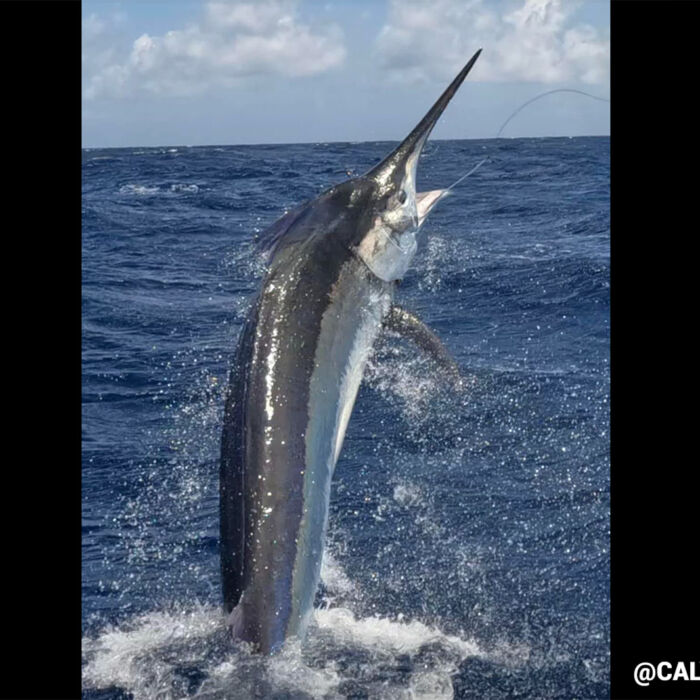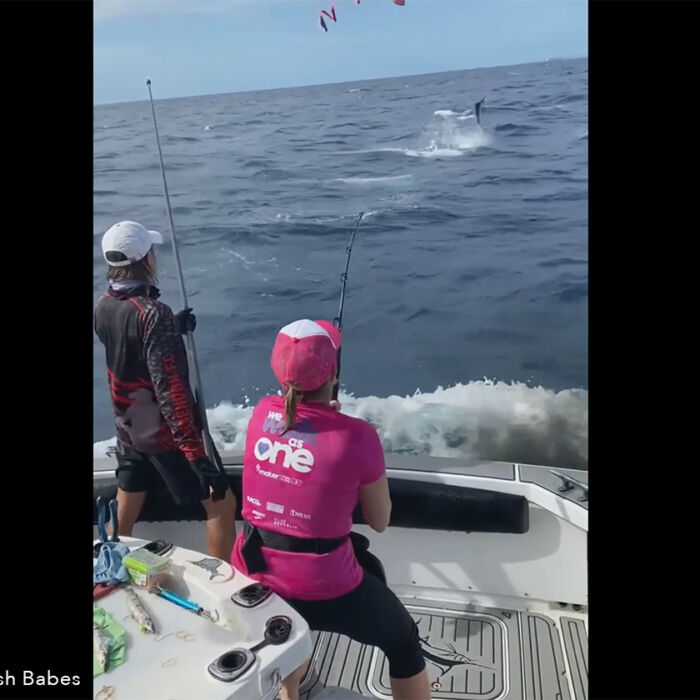This post was imported into WordPress from my old Black Marlin Fishing Blog website without any accompanying photos. If you’d like to see the original post, with the accompanying photographs, go to the original Black Marlin Fishing Blog site and navigate to the post using the archive navigation links on the right-hand-side.
A recent spate of small blacks at the (now) famous billfish grounds off Townville at Cape Bowling Green have us holding high hopes for the season ahead. Since early May, Townsville Game Fish Club members have already been catching a number of blacks – in the small to teeny range – although the weather has stopped much of the fleet from getting out as often as they would like. Typically these smaller fish caught early during May/June indicate a nice run of larger blacks (with full bellies after a season on the grounds) ahead once the season is full underway in August and September. And we are very much looking forward to that!Cape Bowling Green is now known as one of the premier spots across the globe for light-tackle marlin fishing. But is wasn’t always that way. After many moons fishing amongst the many reefs off Townsville, it wasn’t until the early 80’s that the CBG grounds were ‘discovered’ – and it wasn’t originally a marlin fishery either. It was conversations fishing at Cape Moreton that put the idea in Capt. Jim’s mind at least. Jeff Ferguson and Bill Edwards telling of similar (to those at Cape Moreton) bait congregations in forming at CBG area that they had noticed on their yearly sojourns north for the heavy tackle season. Without the time or inclination to investigate further they nevertheless planted a seed. Finally, in 1983, opportunity struck on the return from fishing the Whitsunday tournament with both Capt. Jim and mate Calvin Tilley detirmined to take some time to check it out. Although that day was pretty uneventful, Calvin did manage to hook a sailfish which they fought for over 4 hours (before losing it). It was enough to spark the thought – we should come back here. And so they did. At the next available opportunity Capt Jim took the ol’ Shark Cat Jac-Kel down for another look. The place was thick with sails. Saturday, they saw them all over the place but didn’t catch a single one. Re-gathering behind the spit that night, and maybe fine-tuning the game plan, they had more luck on Sunday, catching a few fish. Word spread amongst the always enthusiastic TGFC members and soon they were all trying their luck. A sailfish haul aboard Chenoa in the 80’s, and Mike Levitt’s 21.3kg black marlin on 1kg line. From that time, Cape Bowling Green was put on the map and people came from all over the world to fish there. While mostly sails, there were a few small marlin creeping in as well. Capt. Luke took early honours as the first person to catch a billfish in a Townsville Tournament in 1984 (at the ripe old age of 14), and it was a marlin. A world record on 4kg that stood for a mere 24 hours before OB Junior (Leigh) caught one bigger the very next day. Since that day, literally 10’s of thousands of billfish have been released at CBG. In 1985, Anne Dalling became the first woman in the world to catch a black marlin on 1kg line. And Mike Levitt, the famous light-tackle angler later made the trip himself and landed a much sort after world record after a mere 2 hours of fishing. Capt. Luke’s logs as a deckhand on board Jac-Kel with Capt Jim show that for their 3 month season in 1987 – fishing for 70 days – they averaged 8 fish a day with a ratio of 3 to 1, sailfish to marlin. Within a year though, it had all changed. From 1987, the sailfish started to slacken off and the great numbers have since disappeared. Since then it has been mainly marlin, and in great numbers. With the decline of the sails, the sardines and annoying long tom’s have mostly gone with them. And the schools of hundreds of dolphins that you used to see have gone as well. But the bait is not all gone. In fact, the single best peice of advice anyone gives with regard to fishing at CBG is to find the bait, and you’ll find the fish. Huge schools of yakkas and pilchards still plague the area and the juvenile black marlin set up camp around these schools from May to October, litterally putting on up to 10kgs a season. A 10kg marlin may double his weight by the time the September tournament rolls around. There have also been a few big ones thrown into the mix – who can forget Utopia’s 800lb-er during the tournament in 2006. A haven for juvenile billfish, sails and black marlin alike. And Anne’s 1kg world record, an 11kg black. Those in the know have observed the particularly good years versus the not-so over time. The stand out year being 1996 (a 32 black marlin day on board Orca with Capt Jim, a 36 day on board Assegai with Capt Greg ‘Muddy’ Edwards). 2006 wasn’t too bad either. Let’s hope that 2008 registers on the list. The indications are good, and I know a few captains who can’t wait to get there and check it out in person.Read about what’s new on the BMFB here.





